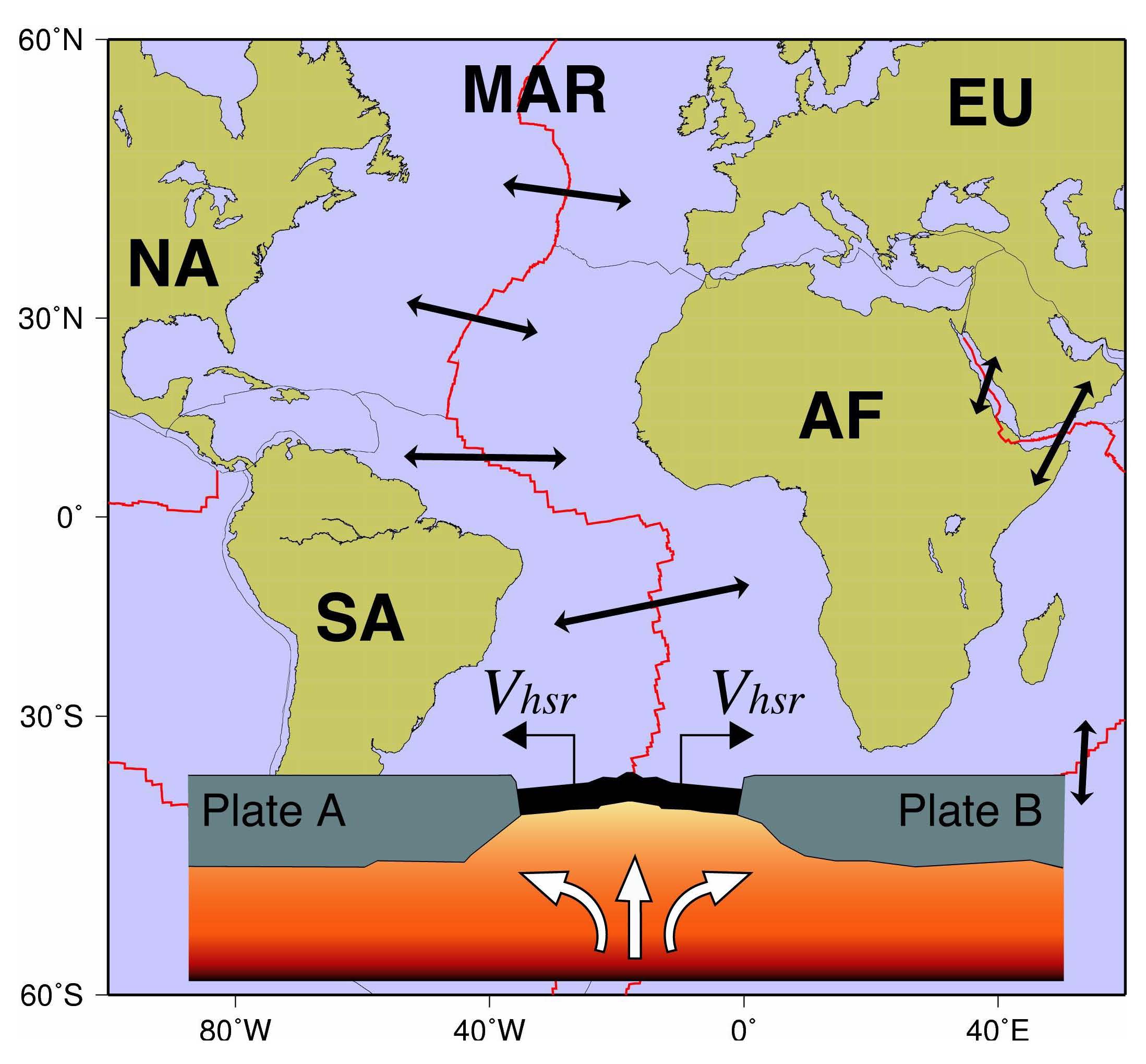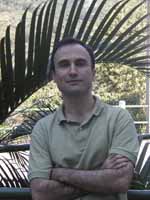2
dicembre
ore
12.00-14.00
Aula
Consiglio
|
Marco
Cuffaro
Plate kinematic models and lithosphere/mantle interactions at mid-ocean
ridges
Plate
kinematics represents the first
evidence of plate tectonic processes and the basics of plate dynamic
models. The kinematics of plates
is defined by Euler pole and angular
velocity, and the main difficulty in describing plate motions is the
choice of the reference frame. This problem is solved doing relative
analysis, keeping one of the two plates fixed: then, plate
displacements can be observed directly and computed by data coming from
geology, geophysics and space geodesy. In contrast, there is not a
direct way to measure motions relative to the mantle, and they need to
be inferred indirectly, using results of relative plate kinematic
models. Plate motions in the mantle-framework are useful to understand
why plates move and what forces are involved, and also represents the
initial conditions for plate dynamic numerical modeling. Tectonic
evolution at the base of the oceans is generally obtained, modeling
with relative plate motions and steady-state processes.
A better
way to understand lithosphere/mantle interactions, at mid-ocean ridges,
corresponds to plate kinematic analyses with respect to the mantle,
modeling time-dependent tectonic processes. Numerical solutions for
viscosity flow beneath plates, that thicken with increasing age,
provide useful relationships between
mantle temperature and thickness of the oceanic lithosphere. The kinematics of plates
is defined by Euler pole and angular
velocity, and the main difficulty in describing plate motions is the
choice of the reference frame. This problem is solved doing relative
analysis, keeping one of the two plates fixed: then, plate
displacements can be observed directly and computed by data coming from
geology, geophysics and space geodesy. In contrast, there is not a
direct way to measure motions relative to the mantle, and they need to
be inferred indirectly, using results of relative plate kinematic
models. Plate motions in the mantle-framework are useful to understand
why plates move and what forces are involved, and also represents the
initial conditions for plate dynamic numerical modeling. Tectonic
evolution at the base of the oceans is generally obtained, modeling
with relative plate motions and steady-state processes.
A better
way to understand lithosphere/mantle interactions, at mid-ocean ridges,
corresponds to plate kinematic analyses with respect to the mantle,
modeling time-dependent tectonic processes. Numerical solutions for
viscosity flow beneath plates, that thicken with increasing age,
provide useful relationships between
mantle temperature and thickness of the oceanic lithosphere.
|
4
novembre
ore
13.00-15.00
Aula
Consiglio |
Carlo
Doglioni

Tectonic asymmetry of the Earth: any
relation with tides?
The
Earth
shows a
systematic asimmetry of the first order tectonic features, both along
subduction zones, orogens and oceanic rifts.
This signature is consistent with the "westerly"
directed rotation of
the lithospheric Earth's outer shell (about 100 km). We still do not
know
why the lithospheric plates move, and why there is such a net rotation
of
the lithosphere.
We are testing the idea that the westward drift and
tectonics at plate margins (e.g., earthquakes) are generated by a
combination of thermal dissipation of the planet and the body tide. The
body tide, or solid Earth tide, is westerly polarized due to the
misalignment of the tidal bulge with respect to the Moon and Sun
gravitational alignments. This permanent instability should generate a
westerly directed moment.
The transit of the associated wave should generate a slow, permanent
shift
in the order of 0.1 mm/half-day.
|
|
7
ottobre
ore 12.00-14.00
Aula
Consiglio
|
Claudio
Landim
Central
limit theorem for Markov processes: the martingale approach
|
 |
|